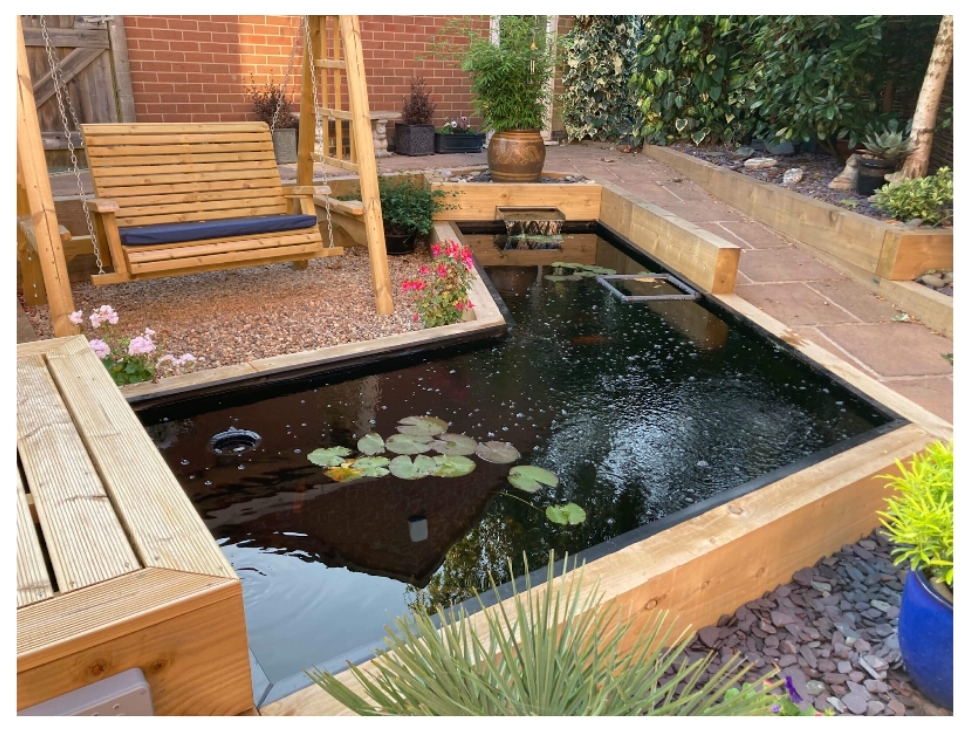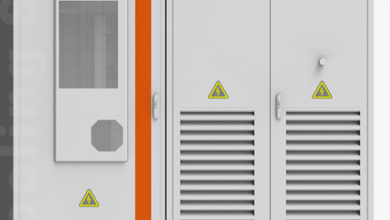Why Choosing Butyl Pond Liner Is A Wise Option Than Using Concrete For Ponds

When it comes to building a pond that lasts, the material you choose beneath the surface does far more than hold water; it defines your long-term success. Whether you’re a homeowner dreaming of a peaceful garden pond, a landscaper crafting natural water features, or someone setting up a habitat for koi or wildlife, your base matters more than you might think.
Many first-time pond owners are tempted by concrete ponds, drawn in by the illusion of permanence. But over time, these same ponds are often plagued by cracking, algae issues, costly repairs, and frustrating leaks. What begins as a solid structure ends up demanding more time, maintenance, and money than expected, especially in UK weather conditions that are anything but predictable.
Here’s where choosing a Butyl pond liner becomes a far smarter long-term investment. It’s not just easier to install or more cost-effective — it gives you control, flexibility, and peace of mind. More and more pond builders across the UK are now searching for alternatives to rigid concrete designs, actively Googling terms like “best liner for koi pond UK,” “how to build a low-maintenance wildlife pond,” or “Butyl liner vs concrete pond.”
The real question isn’t “Can I use concrete?” — it’s “Why should I, when a better alternative exists?”
In the following sections, you’ll discover exactly why Butyl pond liners outperform concrete in durability, design freedom, fish safety, and cost over time. If you’re serious about building a pond that stands the test of time, you won’t want to miss what comes next.
Butyl Pond Liner vs Concrete: A Quick Overview
Choosing between a Butyl pond liner and concrete isn’t just about the material; it’s about how much control, flexibility, and peace of mind you want over the years. One gives you freedom and longevity. The other demands compromise and constant upkeep.
While concrete may appear ‘solid’ on the surface, it often comes with hidden challenges: cracking in cold spells, algae build-up, and expensive repairs. These issues are widespread in the UK, where the weather rarely plays fair.
Butyl liners, by contrast, adapt effortlessly to ground movement, suit both formal and natural pond shapes, and are quicker to install. They’re non-toxic, safer for wildlife and fish, and designed to last, without needing constant maintenance.
Here’s a quick side-by-side breakdown:
| Aspect | Butyl Pond Liner | Concrete Pond |
| Flexibility | Fits any shape easily | Limited to fixed forms |
| Installation | Fast and DIY-friendly | Labour-heavy, requires curing |
| Weather durability | Withstand frost and soil shifts | Prone to cracks in cold, wet conditions |
| Maintenance | Minimal upkeep, easy to patch | Costly repairs, algae issues |
| Fish & wildlife safety | Non-toxic, fish safe | Needs sealing to prevent teaching |
| Long-term cost | More affordable over time | High maintenance cost |
When UK pond builders search for “best material for pond construction” or “Butyl vs concrete pond UK,” they’re not just comparing structure — they’re choosing what kind of pond-keeping experience they want. In the next section, we’ll look at why design flexibility is one of the most significant advantages of going with Butyl.
Where Concrete Fails in Real-World UK Gardens
Concrete is often chosen for its perceived strength and longevity. At a glance, it appears to be the logical option — solid, durable, and lasting. But in practice, particularly in British gardens, it rarely lives up to expectation.
The UK’s weather patterns aren’t kind to rigid materials. With constant shifts between cold snaps, rain, and ground movement, concrete ponds are frequently prone to cracking. Although these issues aren’t always visible at first, they can lead to leaks over time, which in turn cause costly repairs.
Common complaints from UK pond owners highlight the same issues:
- Leaks caused by movement and frost heave — concrete lacks the flexibility to adapt to natural ground shifts.
- Time-consuming installations — building a concrete pond involves excavation, shuttering, mixing, pouring, and curing. It’s labour-intensive and weather-dependent.
- Ongoing maintenance is necessary because algae clings to porous surfaces, leading to water discolouration that requires resealing every few years.
- Escalating costs — initial expenses may seem manageable, but long-term upkeep, patching, and resurfacing quickly add up.
These challenges tend to appear after the initial build, at the point when retrofitting or replacing the pond becomes more of a disruption than anyone anticipated.
For this reason, many UK homeowners and landscapers are now looking beyond concrete. They’re turning to materials that offer not only durability and ease of use, but also the ability to adapt to local ground and weather conditions, without the ongoing hassle.
Next, the focus turns to why Butyl pond liners are so well-suited to British gardens, and how they overcome the problems that concrete simply cannot.
Why Butyl Works Better for British Conditions
Not every pond liner can handle the unpredictability of the British climate, but Butyl can. From shifting ground to heavy rainfall and sudden frost, UK gardens demand a material that’s more than just waterproof — it must be resilient, adaptable, and low maintenance.
Butyl pond liners are valued explicitly for their flexibility and durability, particularly in regions where soil movement and seasonal extremes are common. Unlike concrete, which often cracks under pressure, Butyl stretches without tearing, accommodating ground shifts without compromising the integrity of the pond.
In winter, when freezing temperatures meet saturated ground, concrete ponds frequently develop hairline fractures that go unnoticed until leaks begin. Butyl, being frost-resistant and pliable, absorbs this movement instead of fighting it.
Its performance is also unaffected by UV exposure and root intrusion, making it well-suited to both modern garden ponds and naturalistic wildlife habitats. Whether it’s a small koi pond or a larger landscape feature, Butyl maintains its structure and watertight seal year after year.
The British climate isn’t known for consistency, and that’s precisely why Butyl continues to outperform traditional materials. It doesn’t just fit the shape of a pond; it fits the reality of the environment it sits in.
The Long-Term View: Cost, Maintenance, and Peace of Mind
At first glance, a concrete pond may appear to offer better value. The materials seem widely available, and the structure gives the impression of permanence. But once installation, maintenance, and eventual repairs are factored in, the figures often tell a very different story.
Concrete ponds typically require professional labour, curing time, and a well-prepared base. It’s rarely a weekend project. The initial outlay may not feel excessive, but unexpected costs have a way of creeping in, such as sealing compounds, resurfacing, filtration upgrades, and most commonly, crack repairs.
Over time, weather exposure, frost damage, and ground movement lead to wear that cannot be ignored. Once cracks develop or leaks begin, the only options are patching (which is rarely permanent) or complete reconstruction. Either way, it means disruption, expense, and avoidable frustration.
By contrast, Butyl pond liners in UK demand far less attention. Installation is straightforward and doesn’t rely on curing or perfect conditions. Once fitted correctly, a Butyl liner maintains its seal without additional treatment, offering consistent performance across decades — even in gardens exposed to harsh weather or shifting soil.
For anyone thinking beyond the first season — whether planning a long-term landscape or a low-maintenance feature, the actual value lies not in the cheapest material, but in the one that protects time, effort, and peace of mind.
Wildlife & Fish Safety: What Matters Beneath the Surface
A pond is more than a decorative feature; it’s a living habitat. Whether it’s home to koi, frogs, newts, or visiting birds and insects, the materials used to line a pond have a direct impact on the health and safety of everything that comes into contact with the water.
Concrete ponds, unless sealed thoroughly with the correct coatings, can leach lime and other compounds into the water. This alters pH levels and can be harmful to fish, especially sensitive species such as koi. Even with sealing, long-term wear or minor cracks can reintroduce contaminants without warning.
Rough, porous surfaces also pose risks to aquatic life. Fish can injure themselves on sharp edges, while uneven textures create places for harmful bacteria or algae to flourish.
By contrast, Butyl pond liners are chemically stable and non-toxic, offering a safe, smooth environment for both plants and animals. They’re soft under the fin and foot, reducing injury risk, and their flexibility allows for gently sloping edges, ideal for wildlife to access and exit the pond safely.
For ponds designed to support natural biodiversity or house ornamental fish, Butyl creates the kind of stable, clean foundation that allows life to thrive, without the hidden risks posed by untreated or ageing concrete.
Conclusion
Concrete may appear reliable on paper, but its real-world performance in UK gardens often tells another story — cracking, costly upkeep, and compromised safety for wildlife. In contrast, Butyl pond liners offer flexibility, long-term durability, and a safer environment for fish and plants.
From resisting frost damage to fitting complex pond shapes with ease, Butyl continues to be the preferred choice for those seeking minimal maintenance and long-term peace of mind. It’s increasingly chosen by pond owners and landscapers across Britain looking to avoid the common pitfalls of concrete.
Solutions trusted by professionals — like those available from Butek Ponds — quietly support pond builders in getting it right the first time, without compromising on performance or reliability.



